During Oscars week in Los Angeles, there’s only one event that has the ability to attract both Hollywood celebrities and art-world insiders, and that’s the annual Gagosian Gallery opening that takes place the Thursday before the Academy Awards. This year introduced a collaboration between artist Alex Israel and writer Bret Easton Ellis, who, in a way, came full circle after being regular attendees at the annual event. Ellis began as an invited guest to their dinners a decade ago when he first moved back to Los Angeles, while Israel, who recalled seeing a Julian Schnabel exhibition, would go as a precocious L.A. teen. “When I was a teenager, it was the only time that I could see these two worlds collide, these two interests of mine collide during this opening, and it was open to everyone,” says Israel. “I used to go when I was high school, and see the art and absorb it. It was exciting to participate in something that was inspiring.”
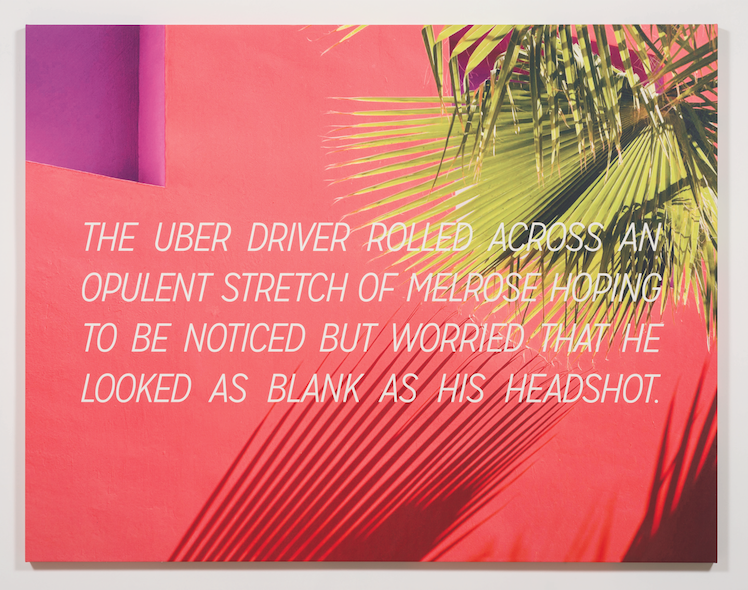
Several of the attendees at the opening compared the cast of characters at the event (including Kim Gordon, Miguel, and Elton John) to those in one of Ellis’ novels. “I saw big poodles and crazy hair and some great outfits, and some famous faces,” said Israel over the phone, while driving to Santa Barbara to unwind after the chaos of the week before. For Israel, the event was an out of body experience. For Ellis, it was surreal, but a bit overwhelming, due to the throngs of fans asking him to sign his books.
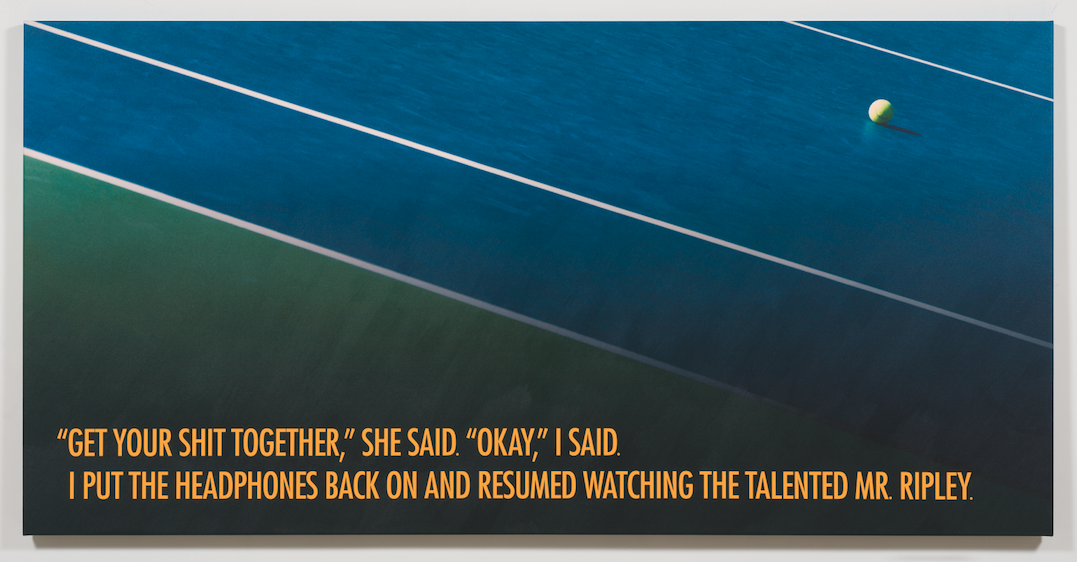
Israel first discovered Ellis’ writing during his freshman year at Yale, when he read Less Than Zero on the plane home for Thanksgiving break. Israel found himself in the same place as the protagonist, who was also returning home to L.A. during a college break. “I immediately felt a kindred spirit in the writer for a lot of reasons,” he recalls. Nearly a decade later, in 2010, after meeting Ellis socially on several occasions, Israel interviewed the novelist for a magazine article. “It was very intimidating because I had been so inspired by his books that I wanted to be good, and I wanted it to be interesting enough for him,” says Israel. “We sat down and we started talking and he’s such a nice open guy that it’s really easy to talk to him, so it read well.”
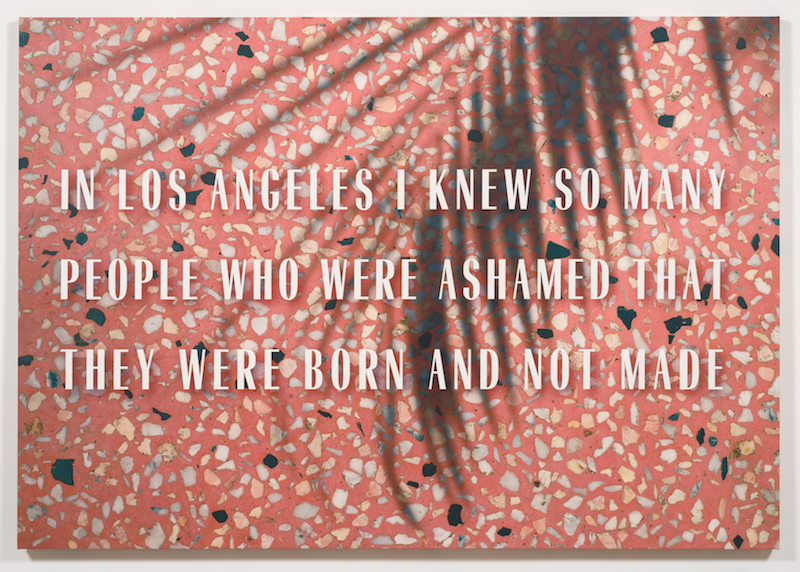
Instead of choosing Ellis as his partner, Israel could have very well inserted his own quips into the work, just as Ed Ruscha, Barbara Kruger, and John Baldessari did before him, but he insists otherwise. “Oh no,” he says. “I could not have written the text myself. I mean I could have written some things, but nothing like that. He’s a master of that.” So, intent on carrying on the tradition of Los Angeles artists making text-based art, Israel asked Ellis.
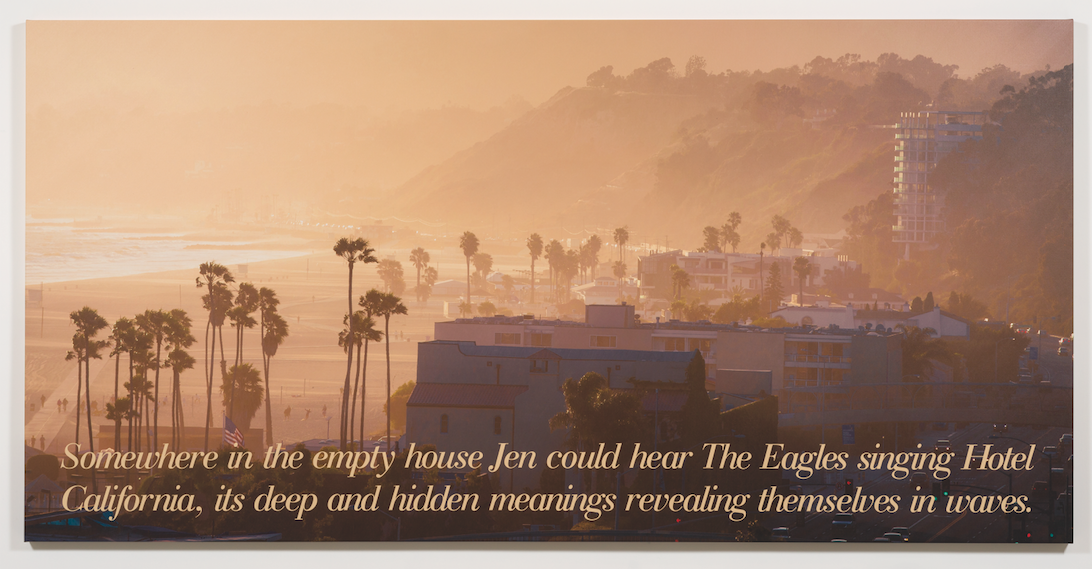
Ellis confessed that had it been a decade ago, he would have turned down the project, but that he’s more open to experimenting with other disciplines after observing Israel’s turns as a talk-show host, artist, eyewear entrepreneur, and filmmaker — and after seeing James Franco turn into a multi-hyphenate. “It was really a no brainer for me, because I like Alex’s art, I like the idea of these paintings,” says Ellis, who admits, “I thought it was going to be easier.”
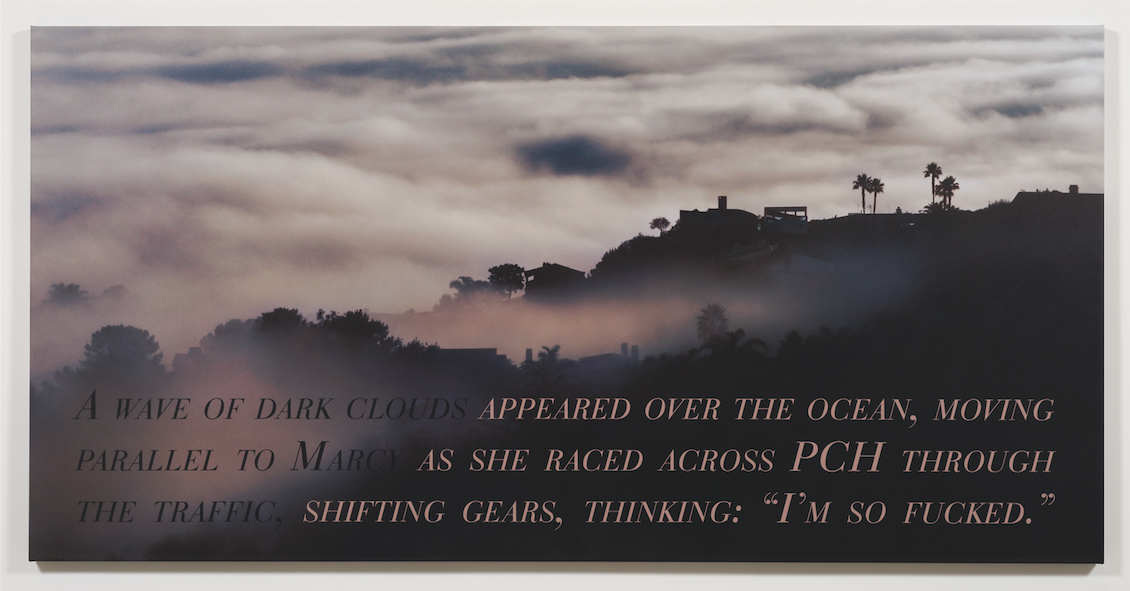
First, Israel gave Ellis some directives: “Maybe you can write the first sentence of a novel that’s not going to exist, or write about a character, or write a whole story,” he told Ellis. For about a year, Ellis would come up with text, and then he would meet with Israel, who would give him his input, and together, the two would change and edit the captions. With Los Angeles as the main character in the exhibition, other characters and themes of transition began to arise. “It was almost as if I was writing a novella at times about this world and these people,” says Ellis, who estimated that there were thousands of lines that were cut to the 17 canvases in the exhibition. Then Israel would experiment with different fonts for the captions and peruse stock images on the Internet to find the right image for each one, creating a number of mockups.
It couldn’t have been a more ideal pairing of two native Angelenos whose fascination with the city fuels their work. Ellis’ dark portrayals of the city complimented Israel’s more optimistic point of view. The result is pessimistic snarky lines like “IF YOU DON’T LIKE ME UNFOLLOW ME” set against the L.A. sky at dusk, which can be viewed on a billboard above Sunset, and “I’M GOING TO BE A VERY DIFFERENT KIND OF STAR.” imposed over the city’s illuminated skyline at night.

“We’re still both L.A. kids, and there’s an influence of growing up here that Alex has, that I have, that is universal in a way regardless of our different generations,” says Ellis, who revealed that the only works by Israel he owns are a couple from their collaboration. “It’s just the beach, it’s just the blue sky, it’s just the palm trees, it’s just the weather. I can look at it blackly, he can look at it more optimistically and add in frozen yogurt and whatever he likes rather than heroin and cocaine in my work, but still there is an overlap there of growing up in this paradise.”
Credits
Text Ann Binlot
Images © Alex Israel and Bret Easton Ellis, courtesy iStock and Gagosian Gallery
Photography Jeff McLane
